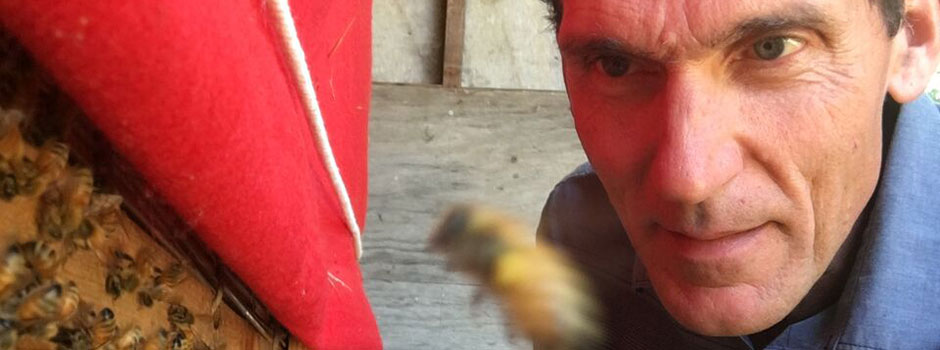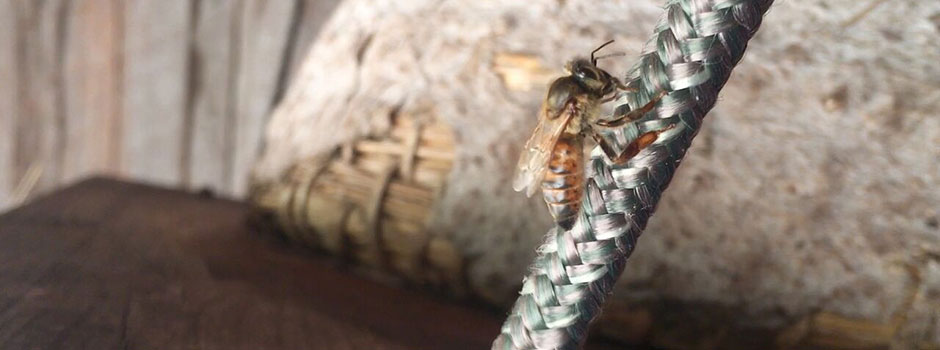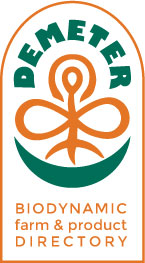“Healing people and the planet through agriculture”
For Farmers
Honeybees - A Compass Point
By Michael Joshin Thiele,  Gaia Bees
When we enter the life of honeybees, we venture into a multidimensional landscape of being. Their 'ecology of selves' is as rich and all-pervading as it is intimately connected with the entire biosphere and our cultural life-sphere. As we know, their survival and well-being is critical for that of our own.  From this realization emerges an intimacy which can be a guiding principle for our relationships with bees and a resource for our quest to find ways to provide for them on our farms, within our landscapes, and our local watersheds. The current zeitgeist seems to lead us naturally to inquire how we can create a holistic framework and engage with honeybees in a truly bee-centric fashion?
What kind of phenomenon does it represent?¬† The nature of honeybees ‚Äď which I would like to refer to from here on as the onebeeing ‚Äď is complex, fluid and appears to integrate polar opposite qualities. The surprising mammalian-like qualities in an insect body, and the singularity of the macro-organism, which consists out of thousands of individuals, are examples of the multidimensionality of its being. The onebeeing is a vastly dynamic life form, exhibiting a breathtaking degree of plasticity and flexibility. Its own tissue consists of thousands of individual bees, who are the medium for countless physiological processes ranging from metabolism, gestation, sense perception, and neurological processing. What is unique is that the onebeeing functions as if it were undifferentiated tissue. No specific organ seems to appear, and yet all normal functions of inner organs are present. This tissue acts like stem cell tissue without ever losing a complete open dynamic state of evolving according to current needs. Its receptivity and aliveness towards formative forces and fields in general transforms this tissue-like 'gathering of individuals' into a new dimension of life.
The onebeeing is a network of interrelations. Unlike our own default sense of self, hers is not defined as a living being separate from the world, but rather as being part of the world through intimate belonging. Her sense of self is created in dynamic and multidimensional processes, as if she were embodying a network of multiple selves. We could almost say that she 'are' more other than self. This cornucopia of levels of selves comes with a change in language, as if common grammar was unable to reflect this phenomenon. What follows is a reshaping of our perception and understanding of 'them', and an inward shift of our frame of reference. Our own identity becomes more fluid, more open. Who 'is' we?
The symbiotic and relational quality of the onebeeing is beautifully expressed in the place of home, as the typical nest is located within another being, namely within the womb of a tree.  It is a place of physical and emotional warmth, one of inwardness and sensing.  It is often to be found high up in trees and therefore suspends the onebeeing between heaven and earth.  It does not fully belong to the earth, but rather leans towards her.  Hollows in trees have been the natural nesting site of the onebeeing for millions of years. The typical hollow develops over several years, if not decades, in trees in the aftermath of an injury.  In the process, microorganisms, insects, and vertebras contribute to the shaping of the final nest hollow. Eventually the offspring of a onebeeing, also known as swarm, will find the hollow and establish a nesting site which can, depending on the tree species, stay viable for centuries. As the hollow transforms into the nest site of the onebeeing, it undergoes several changes. Specific to this new inner environment, over 200 symbiotic insects and around 8,000 microorganisms join the onebeeing and form a new unit of its own kind. This 'ecology of selves' represents the foundation of health, aliveness, happiness, and balance. This kind of nest is the true home of the onebeeing.  In utter darkness and within an undisturbed and protected nest, white comb emerges and grows in natural ways, as it can freely follow her instinctual preferences. Comb is never moved, nor are any blue prints or implants, otherwise known as foundation, given. Only in such an environment can the onebeeing unfold her embodiment fully and freely. On a fundamental level, a birth right is granted: the birth right to be fully herself.  The question arises how this natural home can become our reference for a holistic paradigm of apiculture?  And how can we integrate this rich and complex focal point into our farms and our watersheds?
Earlier this year I went to Flagstaff, AZ to teach a weekend course on the subject.  We were a diverse group of apiculturists, gardeners, and educators all united in a gesture of honoring the onebeeing and in finding new reference points for our life with bees.  One of our activities was an experiential group exercise of receptive listing, similar to that of systemic constellation work.  As a 'gathering of individuals', we not only entered an open ended process of listening and becoming, but we also entered into a field-like medium, a soulful awareness of being alive.  This is what we can call 'Apisophia', the wisdom of the onebeeing.  It is a wisdom which can be an inspiration in all aspects of our lives and a compass point for times of uncertainty.
Our farms and watersheds are trans-species organisms and diverse ecologies of selves, in which we live and are part of.  The unique nature of the onebeeing can be a resource for our navigation through this greater web of life, as it teaches inclusive ways of decision making and promotes an awareness of the entanglements of our lives within the world.  The onebeeing points towards an apiculture beyond bees, one that does not begin with a quest for honey, but rather with humility and a sense of prayer.  It is concerned with the well-being of the web of life and a renewed human role and identity, one which is shifting away from viewing the world as 'otherness' and moves towards an awareness of being a constituent of a biotic, emotional, and spiritual community.
"Our farms and watersheds are trans-species organisms and diverse ecologies of selves, in which we live and are part of."
Michael Joshin Thiele
Previous Articles



